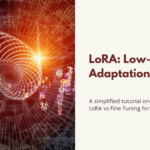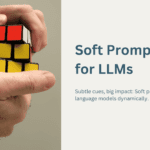Large Language Models (LLMs) have revolutionized natural language processing, yet they harbor inherent biases and potential toxic behaviors. Understanding these biases and toxicities is critical for responsible AI development. Bias refers to systematic errors in models that reflect prejudiced assumptions, while toxicity encompasses harmful, offensive, or inappropriate content. Detecting and mitigating these issues demands rigorous methodologies to ensure ethical and fair AI. This article delves into the nuances of bias and toxicity in LLMs, explores detection methods, and outlines strategies to mitigate these challenges.
Bias in LLMs
Bias in LLMs represents skewed interpretations or prejudices embedded in the data used for training. These biases can manifest in various forms, such as gender, race, religion, or socio-economic status. For instance, a model trained on historical texts might perpetuate gender stereotypes or racial prejudices present in the training data. Unchecked biases can lead to unfair outcomes, reinforcing societal inequalities or causing harm in decision-making processes.
Toxicity in LLMs
Toxicity in LLMs pertains to the generation of harmful, offensive, or inappropriate content. This can range from hate speech and explicit language to misinformation and harmful suggestions. Toxic behavior can stem from the model’s learning of negative patterns within the input data, inadvertently generating content that can incite harm or propagate falsehoods.
Methods to Detect Bias and Toxicity
Dataset Analysis
- Statistical Fairness Metrics: Utilize differential privacy measures and fairness metrics to assess biases across demographic groups within the training data. Differential fairness measurements and fairness-aware clustering methods identify and rectify biases by generating synthetic data that maintains statistical parity.
- Fairness-Aware Learning Algorithms: Implement adversarial debiasing and re-weighting instances based on demographic attributes during model training to mitigate biases effectively. Adversarial learning frameworks help in preserving fairness constraints while optimizing model performance.
Word Embedding Analysis
- Fairness-Embedded Embedding Spaces: Align word embeddings with fairness constraints through adversarial learning techniques. Adapting fairness regularizers during training or post-processing manipulates word vectors to reduce biased associations.
- Focused Probing of Embeddings: Investigate word embeddings using bias quantification methods and fairness constraints. Analyze word embeddings for biased associations across demographic groups using sophisticated similarity comparison techniques.
Human Evaluation and Annotation
- Diverse Expert Assessments: Engage diverse expert panels or crowdsourced annotators to evaluate model outputs for biases and toxicity. Leverage adversarial evaluation setups where evaluators actively seek and exploit model biases, providing nuanced insights.
- Quantitative and Qualitative Assessment: Combine quantitative metrics with qualitative assessments to gain a comprehensive understanding of potential biases. Evaluate subjective judgments alongside quantitative fairness metrics for a more holistic evaluation.
Contextual Analysis and Ethical Probing
- Attention Weight Analysis: Probe attention weights or saliency maps to understand influential parts of the input data that significantly impact biased or toxic outputs. Techniques like counterfactual generation and perturbation analysis unveil how modifications in input affect model behavior.
- Model Interpretability for Ethical Insights: Enhance model interpretability through attention mechanisms or layer-wise relevance propagation to understand the decision-making process. Employ techniques to uncover hidden biases or toxic patterns within model inferences.
Strategies to Mitigate Bias and Toxicity
Continuous Monitoring and Bias Audits
- Feedback Loops: Establish continual monitoring frameworks incorporating user-reported data and real-time monitoring to adaptively detect and rectify biases. Conduct periodic bias audits to ensure ongoing fairness and reduce evolving biases.
Data and Model Techniques
- Fairness-Preserving Data Augmentation: Implement techniques like counterfactual data augmentation or generative models to create balanced representations in the dataset, reducing inherent biases.
- Adversarial Training and Fairness Regularization: Incorporate adversarial learning techniques and fairness regularizers during model training to mitigate biases and enforce fairness constraints.
Ethical Review Processes
- Human-in-the-Loop Approaches: Integrate human reviewers or moderators into the model deployment pipeline to filter out potentially harmful or biased content. Employ ethical review boards or committees to oversee model deployment and decision-making processes.
Transparency and Accountability
- Explainable AI Techniques: Employ explainable AI methodologies to enhance model transparency, allowing users to understand model decisions and biases. Ensure accountability through transparent reporting of bias detection and mitigation efforts.
By combining these technical methodologies and strategic approaches, the detection and mitigation of biases and toxicity in large language models can become more comprehensive and robust, facilitating the development of ethical and responsible AI systems.
Conclusion
In the evolving landscape of AI, addressing bias and toxicity in LLMs is pivotal for ethical and equitable deployment. Robust detection mechanisms coupled with proactive mitigation strategies are essential to ensure these models serve as responsible tools in various applications. By understanding, detecting, and mitigating biases and toxicities, we pave the way for more reliable and socially conscious AI systems.
In essence, the pursuit of unbiased and non-toxic language models requires ongoing vigilance, collaborative efforts, and a commitment to ethical AI principles. As we navigate this complex terrain, a conscientious approach will steer us toward the development of LLMs that uphold fairness, inclusivity, and societal well-being.



